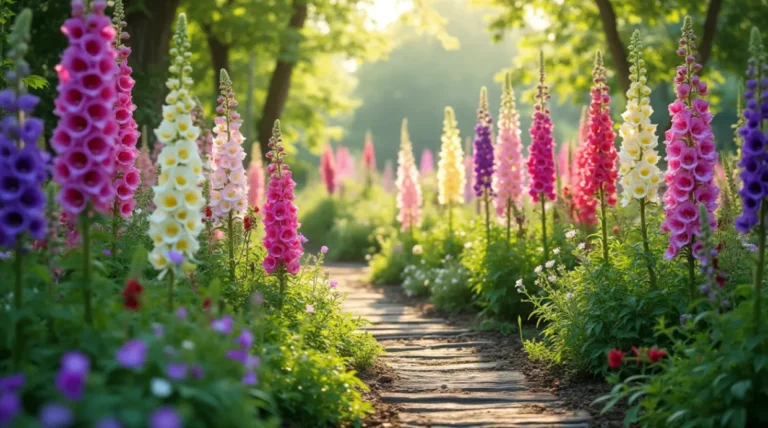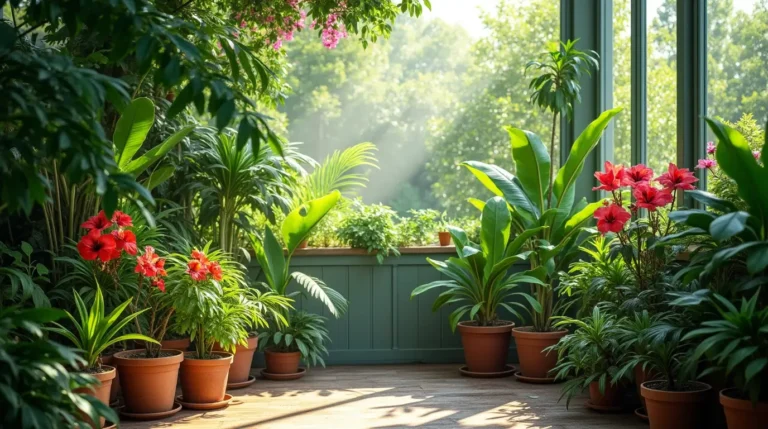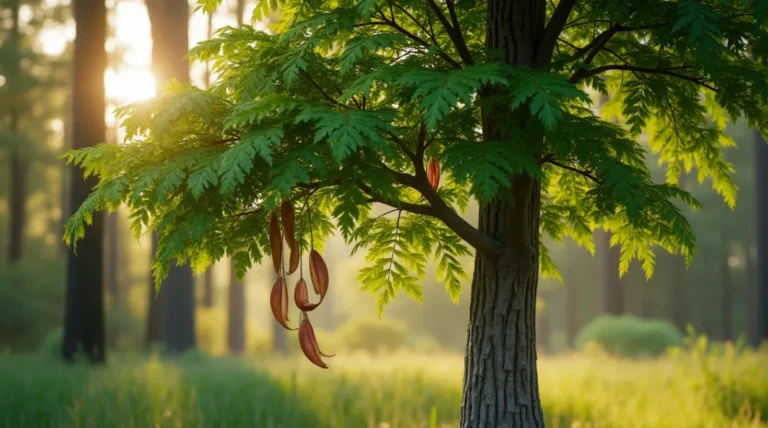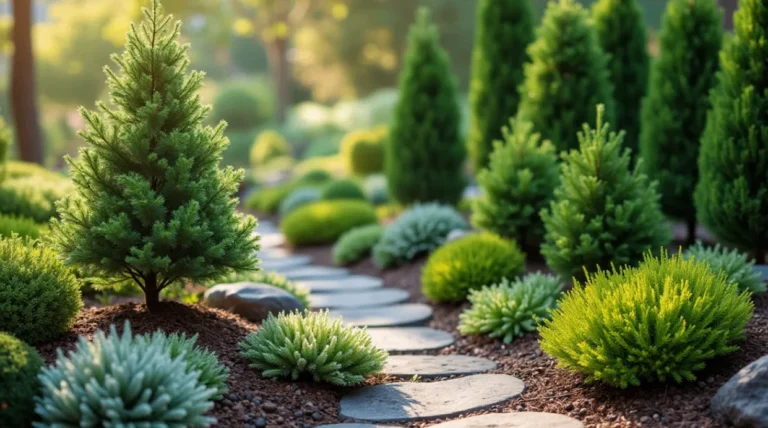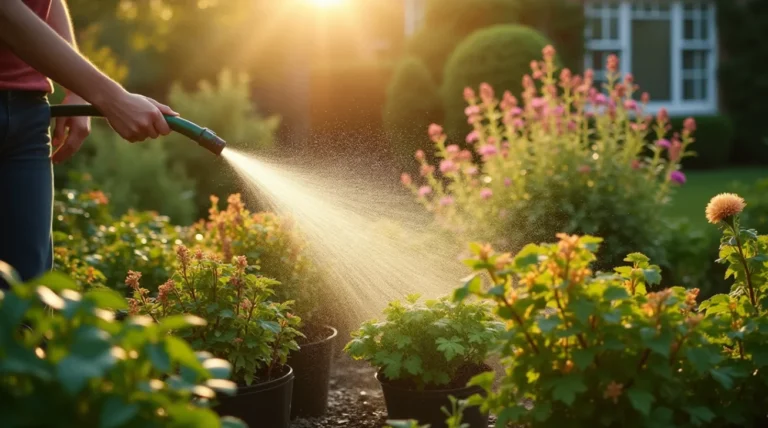Astilbe Flower Care: Everything You Need to Know
Astilbe flowers are a popular choice for shade gardens, known for their beautiful, feathery plumes that add texture and elegance to any landscape.

These flowers come in a variety of colors, including pink, red, and white, making them a versatile option for gardeners. Proper care is essential to ensure that Astilbe flowers thrive and continue to bloom year after year.
With the right care, these flowers can be a stunning addition to any garden, providing beauty and charm for years to come.
Key Takeaways
- Understand the unique characteristics of Astilbe flowers
- Learn the importance of proper care for Astilbe flowers
- Discover tips for maintaining healthy Astilbe plants
- Explore the different varieties of Astilbe flowers
- Find out how to incorporate Astilbe into your garden design
Understanding Astilbe Flowers
Astilbe, commonly known as false goat’s beard, is a perennial flower that thrives in shady, moist environments. These plants are prized for their beautiful, feathery plumes that add texture and elegance to gardens.
What Are Astilbe Flowers?
Astilbe flowers are characterized by their delicate, plume-like blooms that come in a variety of colors, including pink, red, and white. They are perennials, meaning they return year after year, and are relatively low maintenance. Astilbe plants are also versatile, suitable for a range of garden styles from cottage gardens to more formal landscapes.

Origin and Natural Habitat
Astilbe plants are native to Asia and North America, typically thriving in moist, shady environments such as woodland edges and stream banks. Their natural habitat has influenced their growth habits, making them well-suited to gardens with similar conditions. By understanding their origin and natural habitat, gardeners can better replicate the conditions necessary for Astilbe to flourish.
Popular Astilbe Varieties
Exploring the diverse world of Astilbe reveals a multitude of varieties that cater to different gardening needs. Astilbe flowers are not just beautiful; they also come in a range of colors and sizes, making them versatile for various garden designs.
Astilbe Arendsii Hybrids
Astilbe Arendsii hybrids are among the most popular varieties, known for their vibrant colors and robust growth. These hybrids are a result of careful breeding and offer a wide range of colors, from soft pastels to bold reds and purples. They are ideal for adding a dramatic touch to shade gardens.
Astilbe Chinensis Varieties
Astilbe Chinensis varieties are another favorite among gardeners, appreciated for their late-season blooms and tolerance to drier conditions compared to other Astilbe types. They come in various heights and colors, making them suitable for different garden settings.
Astilbe Japonica Types
Astilbe Japonica types are valued for their elegant, feathery plumes and are often used in cut flower arrangements. These varieties are known for their graceful appearance and can add a delicate touch to garden landscapes.
Here’s a summary of the key features of these popular Astilbe varieties:
| Variety | Notable Features | Ideal Garden Use |
|---|---|---|
| Astilbe Arendsii Hybrids | Vibrant colors, robust growth | Shade gardens, dramatic effect |
| Astilbe Chinensis Varieties | Late-season blooms, drought tolerance | Varied garden settings, late-season interest |
| Astilbe Japonica Types | Elegant, feathery plumes | Cut flower arrangements, delicate garden landscapes |
Astilbe varieties offer a wealth of options for gardeners, allowing for the creation of diverse and vibrant garden displays. By choosing the right variety, gardeners can enhance the beauty and appeal of their outdoor spaces.

Selecting the Perfect Location for Astilbe
To ensure the health and beauty of Astilbe, selecting the perfect location is key. Astilbe plants are known for their preference for shaded areas and consistent moisture, making the right location crucial for their growth.
Light Requirements
Astilbe plants generally thrive in partial to full shade. Exposure to direct sunlight may scorch the leaves and cause the flowers to fade more quickly. For optimal growth, it’s recommended to plant Astilbe in areas that receive dappled shade or morning sun followed by afternoon shade.

Temperature and Climate Considerations
Astilbe plants prefer cooler temperatures and consistent moisture. They thrive in climates with moderate temperatures and high humidity. It’s essential to avoid planting Astilbe in areas with extreme temperatures or dry conditions.
| Climate Condition | Ideal for Astilbe | Not Ideal for Astilbe |
|---|---|---|
| Temperature | Moderate (60-75°F) | Extreme (below 50°F or above 85°F) |
| Humidity | High | Low |
| Sunlight | Partial to Full Shade | Direct Sunlight |
Soil Preparation for Astilbe Plants
To ensure your Astilbe plants flourish, it’s essential to prepare the soil correctly. Astilbe plants are perennials that thrive in specific soil conditions, and proper preparation can make a significant difference in their growth and flowering.
Ideal Soil Composition
Astilbe plants prefer soil that is rich in organic matter and has good drainage. The ideal soil composition for Astilbe includes a mix of compost, peat moss, and perlite or sand to improve drainage. Adding organic matter not only enriches the soil with nutrients but also helps retain moisture, reducing the need for frequent watering.
| Soil Component | Benefit | Recommended Amount |
|---|---|---|
| Compost | Rich in nutrients, it improves soil structure | 2-3 inches |
| Peat Moss | Retains moisture, slightly acidic pH | 1-2 inches |
| Perlite or Sand | Improves drainage, prevents waterlogging | 1 inch |
pH Requirements and Adjustments
Astilbe plants thrive in slightly acidic soil, with a preferred pH range between 6.0 and 7.0. Testing your soil pH is crucial to determine if any adjustments are needed. To reduce overly alkaline soil, incorporate elemental sulfur or aluminum sulfate to lower the pH. On the other hand, if the soil is too acidic, adding lime will help raise the pH to the ideal level.

Creating the ideal growing environment for Astilbe begins with adjusting the soil pH and composition to meet the plant’s specific needs, encouraging vigorous growth and plentiful blooms.
Planting Astilbe: Step-by-Step Guide
With the right steps, planting Astilbe can be a straightforward process. Astilbe plants are known for their beautiful, feathery plumes that add texture and color to shade gardens. Whether you’re planting in containers or directly in garden beds, understanding the basics of Astilbe planting will help ensure success.
When to Plant Astilbe
The best times to plant Astilbe are in the spring or fall. Spring planting allows the plants to establish themselves before the heat of summer, while fall planting gives them a head start on the next growing season. Avoid planting in the middle of summer when possible, as this can cause stress to the plants.
Planting Techniques
Planting Astilbe requires careful attention to detail. Here are some techniques to follow:
Container Planting
When planting Astilbe in containers, choose a pot that is at least 6-8 inches deep to accommodate the plant’s root system. Choose a well-draining potting mix and water the plant thoroughly after planting.

Garden Bed Planting
For garden bed planting, prepare the soil by adding organic matter like compost or well-rotted manure. Prepare a planting hole that matches the depth of the root ball and is twice its width to ensure ample room for root expansion. Gently place the Astilbe plant in the hole, backfill with soil, and water well.
Spacing Requirements
Proper spacing is crucial for the healthy growth of Astilbe plants. Generally, space them 12-18 inches apart, depending on the variety. The additional space promotes proper air circulation and prevents plants from becoming crowded. A table outlining spacing for different Astilbe varieties is provided below:
| Astilbe Variety | Spacing Requirement |
|---|---|
| Astilbe Arendsii | 18 inches |
| Astilbe Chinensis | 12-15 inches |
| Astilbe Japonica | 15 inches |
By following these guidelines, you can successfully plant Astilbe and enjoy its beautiful blooms for years to come.
Watering Your Astilbe
Astilbe care involves more than just planting; it includes appropriate watering techniques. Consistent moisture is crucial for the health and beauty of Astilbe flowers. These perennials thrive in moist environments, making regular watering a vital part of their care.
Watering Frequency
The frequency of watering Astilbe depends on several factors, including soil type, climate, and the time of year. Generally, Astilbe plants require about 1-2 inches of water per week, either from rainfall or irrigation. In dry spells, it’s essential to water them deeply to maintain consistent soil moisture.
A simple way to check if your Astilbe needs water is to insert your finger into the soil up to the knuckle. If the soil feels dry, it’s time to water. In the heat of summer, check soil moisture regularly and water more often to keep the soil from drying out.
Signs of Overwatering and Underwatering
Both overwatering and underwatering can be detrimental to Astilbe plants. Avoid overwatering—excess moisture can trigger root rot, which is potentially fatal for your plants. Signs of overwatering include yellowing leaves and a soft, mushy stem base. On the other hand, underwatering can cause the leaves to wilt and turn brown, especially at the edges.
| Condition | Signs | Action |
|---|---|---|
| Overwatering | Yellowing leaves, soft stem base | Reduce watering frequency |
| Underwatering | Wilting, brown leaf edges | Increase watering frequency |
By monitoring your Astilbe plants regularly and adjusting your watering schedule accordingly, you can ensure they receive the right amount of moisture. This attention to watering is a critical aspect of astilbe care, helping to maintain the health and vibrancy of these beautiful perennials.
Fertilizing and Feeding Astilbe
Fertilizing Astilbe is not just about providing nutrients; it’s about creating an optimal growing environment. Proper fertilization promotes healthy growth, enhances flowering, and helps the plant resist diseases and pests.
Types of Fertilizers for Astilbe
A balanced, slow-release fertilizer is highly recommended for Astilbe. These plants thrive in soil rich in organic matter, so incorporating compost or well-rotted manure can be highly beneficial. A fertilizer with a balanced N-P-K ratio (e.g., 10-10-10) is ideal, as it provides equal amounts of nitrogen, phosphorus, and potassium.
It’s also worth considering the use of organic fertilizers, such as fish emulsion or bone meal, which release nutrients slowly and promote soil health. Avoid high-nitrogen fertilizers, as they can encourage leaf growth at the expense of flower production.
| Fertilizer Type | N-P-K Ratio | Release Rate |
|---|---|---|
| Balanced Fertilizer | 10-10-10 | Slow |
| Organic Compost | Varies | Slow |
| Fish Emulsion | 5-2-2 | Quick |
Fertilizing Schedule
The best time to fertilize Astilbe is in early spring, just as new growth begins to emerge. A second application can be made after the flowering period, typically in mid-summer, to support the plant’s recovery and prepare it for the next growing season.
By following a proper fertilizing schedule and using the right type of fertilizer, you can significantly enhance the health and beauty of your Astilbe plants, ensuring they continue to thrive in your garden.
Seasonal Astilbe Care
To keep your Astilbe plants thriving, it’s essential to understand their seasonal needs. Astilbe perennials require adapted care strategies throughout the year to promote healthy growth and flowering.
Spring Care
In the spring, remove any dead foliage that has accumulated over the winter. This will help to promote new growth and improve the appearance of your Astilbe plants. At the start of the growing season, apply a balanced fertilizer to supply the essential nutrients your plants need.
Summer Maintenance
During the summer, ensure that your Astilbe plants receive adequate moisture, especially during hot and dry spells. Apply mulch around the base of the plants to help retain moisture and reduce weed growth. Monitor the plants regularly for any signs of pests or disease, and address any issues as soon as they appear.
Fall Preparation
As fall approaches, prepare your Astilbe plants for the changing weather conditions. Cut back the foliage after it has died back, and consider applying a layer of organic mulch to protect the roots from extreme temperatures.
Winter Protection
In areas with harsh winters, provide additional protection for your Astilbe plants. Apply a thick layer of mulch or straw to insulate the roots, and consider covering the plants with a breathable cloth to protect from extreme cold and wind.
| Season | Care Tasks |
|---|---|
| Spring | Remove dead foliage, apply balanced fertilizer |
| Summer | Apply a thick layer of mulch or straw, and cover with breathable cloth |
| Fall | Cut back foliage, apply organic mulch |
| Winter | Apply thick layer of mulch or straw, cover with breathable cloth |
Propagating Astilbe
Expanding your Astilbe collection can be accomplished by dividing established plants or growing new ones from seeds. Both methods have their advantages, and understanding the techniques involved will help you successfully propagate these beautiful flowers.
Division Method
The division method is a common and effective way to propagate Astilbe. It involves dividing the roots of a mature plant to create new, independent plants.
When to Divide
The best time to divide Astilbe is in the spring or fall, when the weather is cooler. This timing helps minimize stress on the plants.
Division Technique
To divide Astilbe, carefully dig up the entire plant, making sure to get as much of the root system as possible. Then, gently separate the roots into sections, ensuring each section has at least one growing crown. Replant the divisions immediately, watering them well.
Growing from Seeds
Growing Astilbe from seeds is another viable method, although it can be more challenging than division. Astilbe seeds require specific conditions to germinate and grow.
| Propagation Method | Best Time | Success Rate |
|---|---|---|
| Division | Spring or Fall | High |
| Seeds | Spring | Moderate |
By following these methods, you can successfully propagate Astilbe and enjoy more of these stunning flowers in your garden.
Common Pests and Diseases of Astilbe
When growing Astilbe, it’s crucial to be aware of the common pests and diseases that can affect these plants. Astilbe flowers, with their beautiful and delicate plumes, can be susceptible to various issues if not properly cared for.
Identifying Pest Problems
Astilbe plants can be affected by several pests, including aphids, spider mites, and slugs. Regular inspection is key to identifying these problems early. Look for signs such as distorted leaves, sticky substance on the leaves (honeydew), or actual sightings of the pests.
Disease Prevention and Treatment
Astilbe may be affected by several diseases, including powdery mildew, leaf spot, and root rot. Prevention involves ensuring good air circulation, avoiding overhead watering, and removing infected leaves. Treatment may include fungicides, but it’s essential to start with the least toxic options to protect beneficial organisms.
| Disease | Symptoms | Prevention/Treatment |
|---|---|---|
| Powdery Mildew | White, powdery coating on leaves | Improve air circulation, fungicides |
| Leaf Spot | Small, circular spots on leaves | Remove infected leaves, avoid overhead watering |
| Root Rot | Soft, rotting roots, wilting | Improve drainage, avoid overwatering |
Natural Remedies and Solutions
For those preferring a more natural approach, several remedies can help manage pests and diseases. Neem oil is effective against a wide range of pests, while baking soda can help control fungal diseases. Encouraging natural predators, such as ladybugs, can help control pests in the garden.
By being proactive and using a combination of good gardening practices, regular monitoring, and natural remedies, you can protect your Astilbe plants from common pests and diseases, ensuring they remain healthy and vibrant.
Landscaping with Astilbe
Astilbe plants are not only stunning but also easy to integrate into various landscape designs, from shade gardens to container gardens. Their versatility makes them a favorite among gardeners looking to add texture and color to their outdoor spaces.
Companion Plants
When designing a garden with Astilbe, choosing the right companion plants is crucial. Astilbe pairs well with other shade-loving plants like hostas and ferns, creating a lush and diverse garden bed. Some other excellent companion plants include:
- Heuchera for its maple-like leaves and vibrant colors
- Brunnera for its delicate blue flowers in spring
- Ferns for adding texture and depth
Design Ideas for Shade Gardens
Astilbe thrives in shade gardens, where its beautiful plumes can add a dramatic touch. To create a visually appealing shade garden, consider the following design ideas:
- Layer plants by height, with taller Astilbe towards the back
- Mix different foliage textures, like the fern-like leaves of Astilbe with the broad leaves of hostas
- Incorporate a variety of flowering times to ensure year-round interest
Using Astilbe in Container Gardens
Astilbe is also an excellent choice for container gardening, bringing vibrant color and texture to patios and balconies. When using Astilbe in containers, ensure they have good drainage and are placed in a location that receives the right amount of shade.
Conclusion
Caring for Astilbe plants requires attention to detail and a commitment to providing the right conditions for optimal growth. By understanding the different types of Astilbe, selecting the perfect location, and following proper planting, watering, and fertilizing techniques, you can enjoy the beauty of these stunning perennials in your garden.
Proper Astilbe care involves preparing the right soil composition, maintaining a suitable watering schedule, and protecting your plants from pests and diseases. With the knowledge gained from this article, you can create a thriving Astilbe perennial that adds elegance and charm to your outdoor space.
By applying the tips and techniques outlined in this article, you can enjoy the full beauty of your Astilbe plants and enhance your garden’s overall aesthetic. Astilbe care is a rewarding experience that allows you to connect with nature and appreciate the simple joys of gardening.
FAQ
What is the ideal location for growing Astilbe plants?
Astilbe plants prefer partial to full shade and consistent moisture, making them ideal for shade gardens.
How often should I water my Astilbe plants?
Consistent moisture is key to Astilbe health. Water them regularly, but avoid overwatering, which can lead to root rot.
What type of fertilizer is best for Astilbe?
A balanced, slow-release fertilizer is recommended for Astilbe, promoting healthy growth and flowering.
How do I propagate Astilbe plants?
Division is a common method for propagating Astilbe, typically done in spring or fall. You can also grow new plants from seeds.
What are some common pests and diseases that affect Astilbe?
Astilbe can be susceptible to pests like aphids and diseases like powdery mildew. Regular monitoring and proper care can help prevent these issues.
Can Astilbe be grown in containers?
Yes, Astilbe can be grown in containers, provided they receive the right amount of moisture and shade.
What are some good companion plants for Astilbe?
Astilbe pairs well with other shade-loving plants like hostas and ferns, making them a great addition to shade gardens.
How do I care for Astilbe in different seasons?
In spring, remove dead foliage and apply a fertilizer. In summer, maintain consistent moisture. In fall, prepare the plants for winter. In winter, provide protection from extreme cold.


